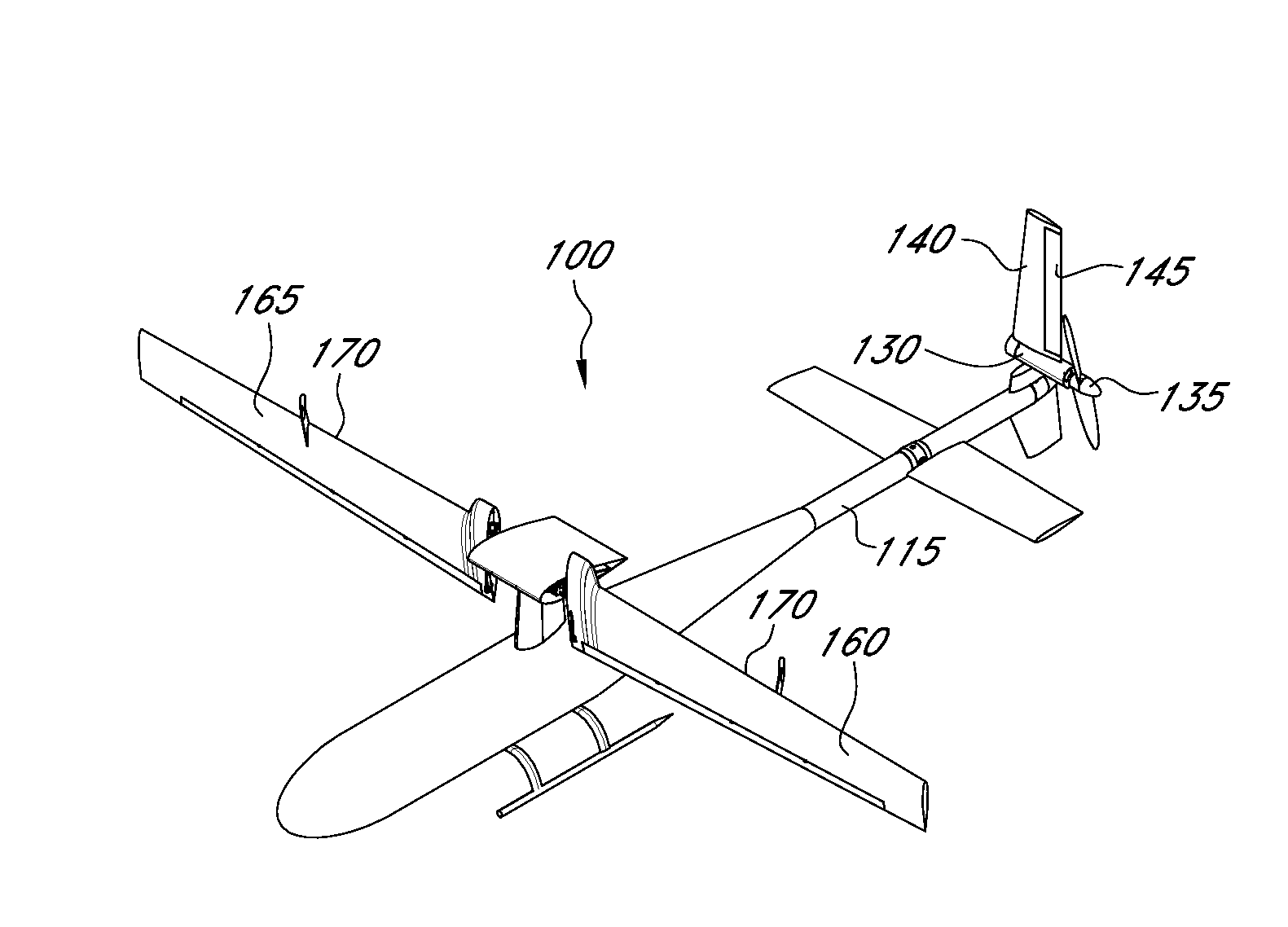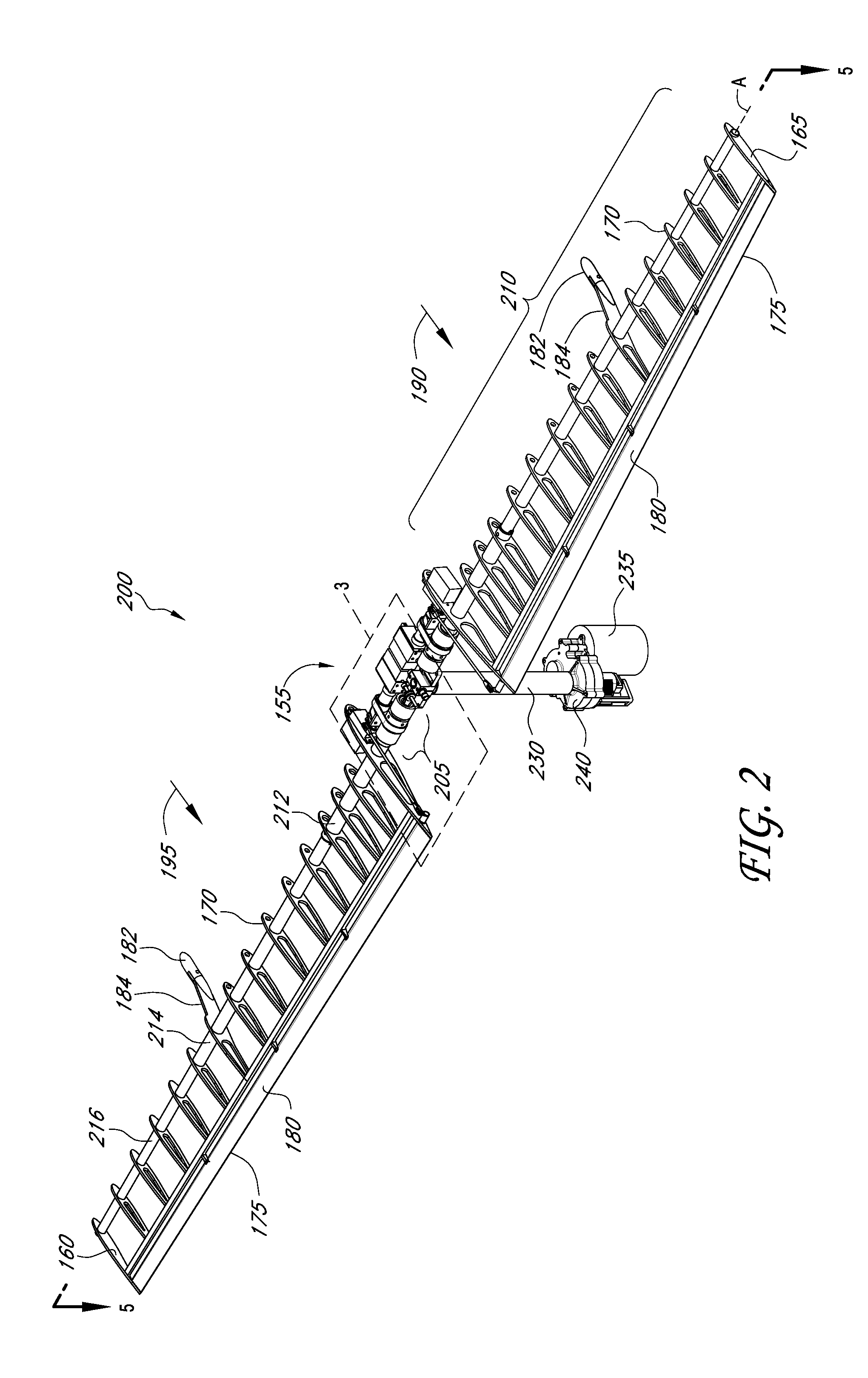Stop-rotor rotary wing aircraft
a rotary wing and stop-rotor technology, applied in the field of aircraft designs, can solve the problems of less practicality of the counter-rotating fuselage and tail of some “nose sitter” designs, and significant loss of altitud
- Summary
- Abstract
- Description
- Claims
- Application Information
AI Technical Summary
Benefits of technology
Problems solved by technology
Method used
Image
Examples
Embodiment Construction
,” one will understand how the features of this invention provide several advantages over current aircraft designs.
[0008]One embodiment is an aircraft capable of helicopter and fixed wing flight modes. The aircraft includes a plurality of wings, each wing having a spar and a flap movable with respect to the spar; a flap actuator configured to move the flap; and a center section rotatably coupled to each spar and including at least one spar actuator. The spar actuator is configured to rotate at least one of the plurality of wings about a rotational axis of the spar when the aircraft transitions between helicopter and fixed wing flight modes.
[0009]Another embodiment is method for transitioning an aircraft between flight modes. The method includes changing the motion of a center section of the aircraft relative to a fuselage of the aircraft from a first flight mode to a second flight mode, where the direction of relative airflow over one of a plurality of wings reverses when the aircra...
PUM
 Login to View More
Login to View More Abstract
Description
Claims
Application Information
 Login to View More
Login to View More - R&D
- Intellectual Property
- Life Sciences
- Materials
- Tech Scout
- Unparalleled Data Quality
- Higher Quality Content
- 60% Fewer Hallucinations
Browse by: Latest US Patents, China's latest patents, Technical Efficacy Thesaurus, Application Domain, Technology Topic, Popular Technical Reports.
© 2025 PatSnap. All rights reserved.Legal|Privacy policy|Modern Slavery Act Transparency Statement|Sitemap|About US| Contact US: help@patsnap.com



